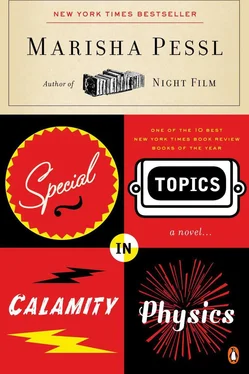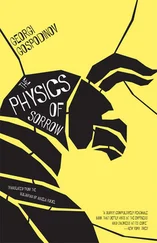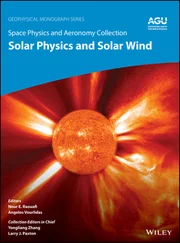I’d been walking for a while, maybe an hour or so, forcing my head to float on these rickety rafts of thought to avoid sinking — when I first heard the noise.
It was so acute, so rhythmic and confident, the entire night-tarred world seemed to quiet itself like sinners at church. It sounded — I stood very still, tried to rein in my breathing — like a child swinging. (“A child swinging” sounds très horrorfilmesque, but I found nothing immediately frightening about the sound.) And though it appeared to fly in the face of reason and common sense, without thinking very much, I began to follow it.
It ceased every now and then. I wondered if I was hearing things. Then it resumed, shyly. I walked on, the flashlight thrusting all those pines back, trying to think, trying to figure out what it could be, trying not to be afraid, but pragmatic and strong like Dad, trying to follow his Determination Theory. I found myself channeling Ms. Gershon of AP Physics, because whenever there was a question in class, she never answered it outright, but turned to the dry-erase board and without a word, dully wrote out five to seven bullet points explaining the answer. She always stood at a forty-five-degree angle to the dry-erase board because she was shy about her back. And yet Ms. Pamela “PMS” Gershon’s back told stories; there was a spot of thinning hair on the back of her head, her pants in tan and taupe clung to her like baggy second skins, her bottom was squashed like a sat-upon Sunday hat. Ms. Gershon, if she were here, would attempt to illuminate all there was to illuminate about this sound, this child on a swing, writing at the top of the dry-erase board (she stood on tiptoe, her right arm high above her head as if she were rock climbing): “Phenomenon of a Child on a Swing in a Heavily Wooded Region: The Seven-Point Spectrum of Conceptual Physics.” Her first bullet point would read, “ As Atoms: Both Child on a Swing and Swing are composed of small moving particles,” and her last bullet point would read, “ As Einstein’s Special Theory of Relativity: If a Child on a Swing had a Twin who boarded a spaceship and traveled close to the speed of light, the Twin would return to Earth younger than the Child on the Swing.”
Another step forward, the sound was louder now. I found myself in a small open space paved with pine needles, fragile, trembling bushes at my feet. I turned, my yellow light shuffling, tripping like a roulette ball across the tree trunks, and then it stopped.
She was astoundingly close, hanging by her neck by an orange rope three feet above the ground. Her tongue bulged from her mouth. My flashlight electrified her giant eyes and the green squares on her checkered shirt. And her inflated face, her expression — it was so inhuman, so sickening, I still don’t know how I knew, in that instant, it was she. Because it wasn’t Hannah, it was unreal and monstrous, something no textbook or encyclopedia could ever prepare you for.
And yet, it was.
The aftermath of seeing her has been locked away into an unassailable prison cell of Memory. (“Witness traumatization,” Sergeant Detective Fayonette Harper later explained.) Despite nights lying awake, trying all sorts of probing keys, I cannot recall my screams, or falling down, or running so fast that I sideswiped something and cut open my left knee, which would need three stitches, or even letting go of the map she’d asked me to hold on to in that dry whisper like a piece of paper touching your cheek.
I was found the next morning, at approximately 6:45 A.M. by one John Richards, age 41, on a trout fly-fishing excursion with his son, Ritchie, 16. My voice had ripped to nothing. My face and hands were so covered in needlelike scratches and mud, a little bit of my own blood, too, they told Dad when they first saw me — (close to Forkridge Trail, nine miles from Sugartop Summit) sitting against a tree, a dead-eyed look on my face, still gripping a dying flashlight — they thought I was the boogeyman.
One Flew Over the Cuckoo’s Nest
Iopened my eyes and found myself on a bed in a curtained cubicle. I attempted to speak, but my voice was a scrape. A white flannel blanket covered me from chin to woolly green ankle sock. I seemed to be wearing a light-blue cotton hospital gown patterned with faded sailboats, an Ace bandage on my left knee. Jabbering incessantly, everywhere, was hospital Morse Code: beeps, toots, rings, clicks, a page for Dr. Bullard to pick up Line 2. Someone was talking about a recent trip to Florida with the wife. A square piece of gauze and a small hypodermic needle were stuck into my left hand (mosquito), which was linked by a thin tube to a bag of clear liquid hanging over me (mistletoe). My head, rather my whole body, felt helium-ballooned. I stared at the folds of the spearmint curtain on my left.
It swooshed. A nurse came in. She swooshed it closed behind her. She glided over to me as if she weren’t on feet but casters with wheel locks.
“You’re awake,” she announced. “How do you feel? Are you hungry? Don’t try to talk. Sit tight and let me change this bag and then I’ll get the doctor.”
She replaced the IV bag and wheeled herself away.
I smelled latex and rubbing alcohol. I stared at the ceiling, at the white rectangles mottled with brown specks like vanilla ice cream. Someone was asking where Johnson’s crutches were. “They were labeled when he came in.” A woman was laughing. “Married for five years. The key is to act like it’s your first date every day.” “Got kids?” “We’re trying.”
Another swoosh and a small tan doctor appeared, girlishly boned with crow-black hair. Around his neck he wore a plastic Backstage Pass that featured, beneath a pixilated picture of himself with the skin tone of a jalapeño, a barcode, as well as his name: THOMAS C. SMART, SENIOR ER RESIDENT. As he walked over to me, his considerable white lab coat whimsically floated out behind him.
“How’re we doing?” he asked. I tried to speak — my okay came out like a knife spreading jelly on burnt toast — and he nodded understandingly, as if he spoke the language. He jotted something down on his clipboard, and then asked me to sit up and take slow, deep breaths as he pressed the icy stethoscope into my back in different places.
“Looking good,” he said with a tired, fake smile.
In a gust of white, a swoosh — he disappeared. Once again, I stared at the glum spearmint curtain. It trembled whenever someone rushed past it on the opposite side, as if it were afraid. A phone rang, was hastily answered. A stretcher rolled down the hall: chick peeps of wobbly wheels.
“I understand, sir. Fatigue, exposure, no hypothermia, but dehydration, the cut to her knee, other minor cuts and scrapes. Evident shock too. I’d like to keep her here a few more hours, have her eat something. Then we’ll see. We’ll give her a prescription for the knee pain. A mild sedative too. The stitches will come out in a week.”
“You’re not following me. I’m not talking about stitches. I want to know what she’s been through.”
“We don’t know. We notified the park. There are rescue personnel—”
“I don’t give a flying fuck about rescue personnel—”
“Sir, I—”
“Do not sir me. I want to see my daughter. I want you to get her something to eat. I want you to find her a decent nurse, not one of these guinea pigs who’d unwittingly kill any kid with an ear infection. She needs to go home and rest, not relive whatever ordeal she’s been through with some bozo, some clown who couldn’t even graduate from high school, who wouldn’t know a motive if it bit him on the ass, all because some chicken-’n-biscuits police force doesn’t have the proficiency to figure it out themselves.”
Читать дальше












